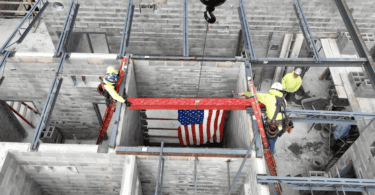by Mike Padden
Tell me if this sounds familiar. It’s the middle of July and the temperature is 90 degrees outside with 70% humidity. Naturally, the air conditioning at the office is running at full power. Refreshing, right? Definitely for some folks, but for others, it’s a bit too cold, forcing us to turn on our space heaters or throw on a sweater.
This is an extremely common issue in the workplace. Some of us like the temperature on the cooler side, while others prefer to have it slightly warmer. Unfortunately for most of us, where we sit in the office is not determined by our preferences in temperature. Many office buildings have traditional HVAC systems where one thermostat controls multiple zones. So if Ed in accounting has a thermostat in his office and he likes it set at 65, all of his neighbors will enjoy 65 degrees, too.
There is a solution. A heat recovery variable refrigerant flow (VRF) system enables building occupants to control heating and cooling in their individual work areas simultaneously. Depending upon the manufacturer, VRF uses a main distribution unit installed in the building’s interstitial space which does not require ductwork in most applications. Instead, there is an individual unit in each office. These office units are fed by copper piping through a main unit, allowing each employee to have his or her own office thermostat.

Individual office units in a VRF system are approximately the size of a ceiling tile or two (depending upon tile size).
VRF is not brand new to the industry. The system has been around for several years; however, it is still relatively underutilized, but has been gaining traction in the marketplace. Many building owners are concerned about the price tag, as the upfront cost of VRF is greater than typical HVAC systems. However, VRF provides a long-term solution with greater efficiency and custom climate control. Also, think of the savings gained with no space heaters in use!
Additionally, VRF is a great solution if building logistics are a concern. You may not always have the room for ductwork above your ceiling to meet your architectural desires. Piping used with a VRF system is typically no greater than 1.5 inches in diameter with 1-inch insulation. That’s a total of 2.5 inches compared to duct, which can be several feet in diameter. Another feature of VRF is its adaptability for expansion. If your office is part of a phased project, VRF allows you to add on whenever you want. If you plan to expand in the future, but are not sure when, purchasing the proper VRF system upfront will only require additional copper piping and office units. All you would need to do is size the equipment prior to purchase. This work is much easier than running duct above finished ceilings and office space.
Aside from cost, what else should you keep in mind when considering a VRF system? The functionality and efficiency is dependent upon the skill and expertise of the contractor installing the system. VRF can potentially contain hundreds of feet of small copper lines running through the ceiling, depending upon the size of your office building. A poor installation would compromise the entire system, which is why it’s critical to use a reliable contractor who specializes in this type of system.
A VRF system may be a consideration for your next project. Before making a decision, though, you need to take into account the building’s size, function, and logistics, as well as the anticipated return on investment. The cost may be worth it if your employees are more comfortable and productive in their work environment.
Mike Padden is an assistant project manager at JM Coull, Inc.











